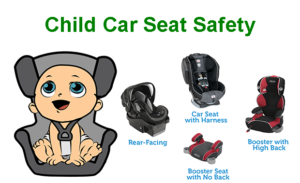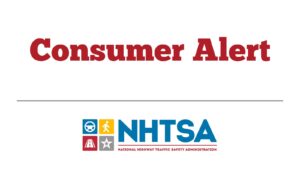The Shelburne Police Department has a long history of working with the State of Vermont to enforce and educate citizens regarding child seat safety.
 Information on child passenger safety and seat belt use is sent home at the beginning of the school year, and periodic checks are conducted at the schools to see that parents are complying with Child Restraint laws. While visiting these locations, if a child safety seat misuse is noted, it is corrected at that time. Child safety seat education is also provided at area daycare facilities.
Information on child passenger safety and seat belt use is sent home at the beginning of the school year, and periodic checks are conducted at the schools to see that parents are complying with Child Restraint laws. While visiting these locations, if a child safety seat misuse is noted, it is corrected at that time. Child safety seat education is also provided at area daycare facilities.
During the National Seat Belt Safety Week in February, the Shelburne Police Department set up Booster Seat presentations daily in Shelburne Community School. Shelburne Police has utilized the Governor’s Highway Safety Program’s Demonstrator to show the proper use of Booster Seats for children aged one to three.
Our CPS Technicians have attended numerous checkpoints sponsored by the Governor’s Highway Safety Program and conducted safety checks by appointment while on duty. If you would like to schedule an appointment, please contact us at (802)985-8051.
 To check for recalls on car seats, visit the National Highway Traffic Safety Administration at the link Safety Issues and Recalls. Click on Car Seats and enter the brand name or model.
To check for recalls on car seats, visit the National Highway Traffic Safety Administration at the link Safety Issues and Recalls. Click on Car Seats and enter the brand name or model.
FAQ:
Which car seat is escape-proof?
- No car seat is truly escape-proof, but sometimes there are things that can be done to help keep the child as safe as possible. Those things include having conversations with your child and checking your car seat owner’s manual, and/or contacting the manufacturer.
When can I turn my child to forward-facing?
- While the law states that one year and 20 lbs are sufficient, studies have shown that keeping a child rear-facing for as long as possible is better. Your car seat’s owner’s manual will give you the height and weight limits.
Is rear-facing safer?
- Rear-facing seats are designed to cradle the child upon impact, as well as divert the crash forces in the safest way possible. Rear-facing has been proven repeatedly to be the safest way to transport young children.
Does the youngest child really need to be in the center of the backseat next to their sibling?
- They don’t! In fact, you should check your vehicle’s owner’s manual to see the safest way to use the LATCH or seatbelt system. Some vehicle manufacturers don’t allow shared LATCH points at all.
When can I move my child to seat belt only?
- Every child is different, so the answer to this question can vary depending on your child’s height, weight, and development. The most important part about moving a child to a seat belt only is the fit of the seat belt, as well as the child’s ability to sit still in the seat for the duration of travel. If you have any questions about whether it’s appropriate to move your child a seat belt, don’t hesitate to reach out to one of our car seat specialists.
If I need a new car seat but can’t afford one financially, where can I get one?
- There are voucher programs available to help families who can’t afford a seat. Reach out to car seat tech to learn more!
What programs assist with providing car seats?
- There are voucher programs available to help families who can’t afford a seat. Reach out to car seat tech to learn more!
Who do I contact for a car seat?
- There are voucher programs available to help families who can’t afford a seat. Reach out to car seat tech to learn more!
I bought a car seat from a yard sale; how do I know if it’s safe?
- It is best practice to assume that a car seat purchased at a yard sale is never safe, as you don’t have a full history of the seat.
Is having bulky clothing unsafe when a child is in their car seat?
- It is highly recommended that children do not have bulky clothing in car seats, as this affects the fit of the car seat harness and will not be effective in a crash.
